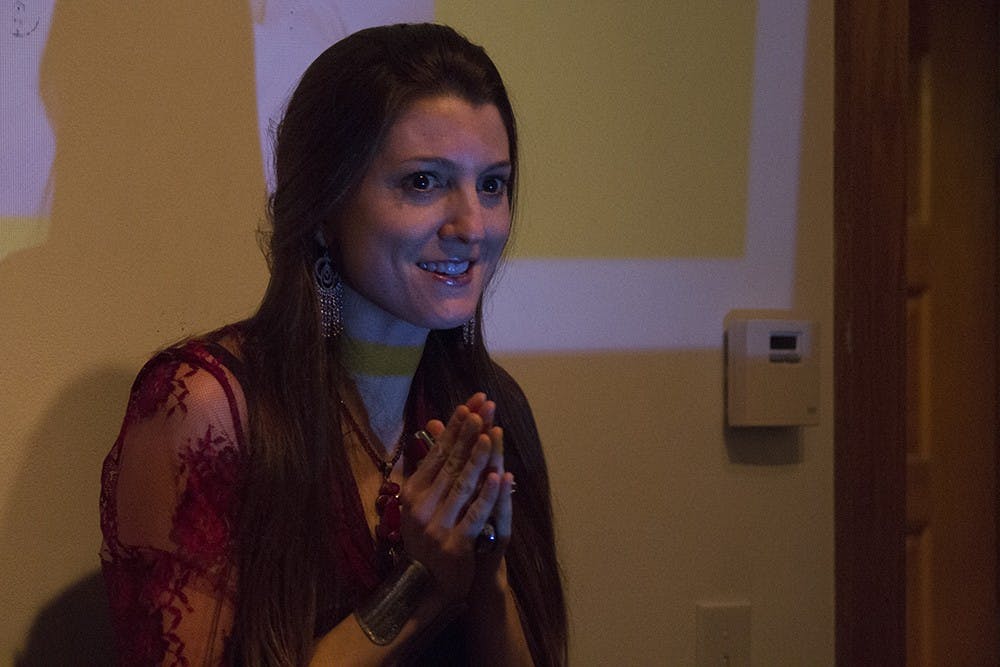Bret and Christine Eartheart are communication specialists who work primarily with couples. They say their communication suggestions are applicable to any sort of relationship.
Bret, a licensed therapist with 20 years of experience, said he was interested in nontraditional therapy methods.
“Research shows that couples often have the same difficult conversation for over 40 years,” Christine said.
Their work focuses on helping individuals and couples communicate more effectively, she said. Bret said all their methods were “battle-tested” — he and Christine have been together for 13 years.
They determined there are five steps of communication in every thriving relationship: romance, a power struggle, commitment to connect, growth and awakening, and thriving.
“Bret and I fell in love. We just shared the shiniest part of ourselves,” Christine said. “But this falling in love part of communication can apply to other relationships as well — like meeting your best friend.”
When they began to talk about how communication can become a power struggle, heads around the room nodded.
“How many have been in the power struggle?” Christine asked.
Hands across the room flew up.
The most common obstacle to listening is listening for the other person to be wrong, the Earthearts said.
“As humans, that’s just something we do,” Christine said.
They asked the audience to share what they struggled with.
“I’m a fixer,” one woman said. “I’ve got to fix your problems and have you listen to me because I have the solution.”
The people surrounding her cheered and clapped.
The most important part of the communication process appeared to be not shutting out the other person. The Earthearts kept returning to processes that helped people keep the other person engaged in the conversation.
“We’ll do a demo,” Christine said as she turned to Brett. “You need to take out the recycling. It’s been sitting in the garage for what feels like years. I feel like I’ve been asking this for so many years. It’s like you’re a child.”
Bret took a moment to think and the people around him burst into laughter.
“All right, first you breathe,” Bret said. “Okay, Christine. What I heard you say is that you’re really frustrated with how I haven’t done the recycling in awhile.”
Christine said she agreed with his response.
One woman in the audience said she couldn’t have responded the way Bret did.
“It’s a matter of will-power,” Bret said.
Audience member Michelle Colman said the techniques were effective — her son had used them when he was a teenager. She said once she had been irritated because he missed the bus and she had to take him to school, but he called her on her communication mistake.
“He said, ‘Mom, let’s talk about what you’re really mad about: me not taking the trash out last night,’” Colman said.
Christine said it was important to validate the speaker and to listen, rather than repeat the listening skills half-heartedly.
“Their underlying fear is that you’re just using a tool,” Christine said. “Really it’s a cry for you to get them and what they’re feeling.”






